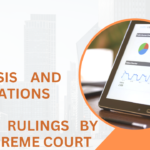In the ever-evolving world of cryptocurrencies, the term “market cap” has become a buzzword that carries significant weight. As digital currencies continue to captivate investors and enthusiasts alike, understanding the intricacies of market capitalization is crucial for navigating this exciting yet volatile landscape. In this comprehensive guide, we’ll delve into the depths of trending coin market cap, exploring its nuances, implications, and the factors that drive its fluctuations.
Thank you for reading this post, don't forget to subscribe!What is Coin Market Cap?
Before we dive into the trending aspects, let’s first grasp the fundamental concept of coin market cap. Simply put, a coin’s market capitalization is a measure of its overall value within the cryptocurrency market. It is calculated by multiplying the total number of coins in circulation by the current price of a single coin.
Market Cap = Total Coins in Circulation × Current Coin Price
This metric provides an overview of a cryptocurrency’s size, popularity, and relative dominance within the market. It serves as a valuable indicator for investors, traders, and analysts alike, helping them gauge the potential growth, liquidity, and overall health of a specific digital asset.
Importance of Trending Coin Market Cap
The term “trending” in the cryptocurrency sphere refers to the fluctuations and movements witnessed in a coin’s market capitalization over time. Tracking these trends is crucial for several reasons:
- Investment Decisions: By monitoring the trending coin market cap, investors can identify potential entry and exit points, as well as gauge the overall sentiment surrounding a particular cryptocurrency.
- Market Dynamics: Trends in market capitalization often reflect the shifting dynamics within the cryptocurrency ecosystem, including changes in demand, adoption rates, and technological advancements.
- Risk Assessment: Analyzing the market cap trends can help investors assess the potential risks associated with a specific digital asset, enabling them to make informed decisions and manage their portfolios effectively.
- Market Influence: Coins with a higher market capitalization tend to wield greater influence within the cryptocurrency market, impacting the overall market sentiment and potentially driving fluctuations in other digital assets.
Factors Influencing Trending Coin Market Cap
Several factors can contribute to the fluctuations in a coin’s market capitalization, shaping the trends observed in the cryptocurrency market. Here are some of the most prominent factors:
- Supply and Demand: Like any market, the supply and demand dynamics play a crucial role in determining a coin’s market cap. Increased demand for a particular cryptocurrency can drive its price upwards, consequently increasing its market capitalization.
- Technological Advancements: Innovations and developments within the blockchain ecosystem can significantly impact a coin’s market cap. For instance, the introduction of new use cases, upgrades, or partnerships can boost investor confidence and drive demand for a specific cryptocurrency.
- Regulatory Environment: Favorable or unfavorable regulatory changes can significantly influence the market cap trends of cryptocurrencies. Stringent regulations may dampen investor sentiment, while supportive policies can foster growth and adoption.
- Media Attention and Publicity: Positive or negative media coverage can significantly impact a coin’s market cap. Favorable news and endorsements can attract new investors, while negative publicity may lead to a decline in demand and a subsequent decrease in market capitalization.
- Investor Sentiment: The overall sentiment within the cryptocurrency community plays a pivotal role in shaping market cap trends. Optimism and confidence can drive investment inflows, while fear and uncertainty may lead to capital outflows, impacting the market capitalization of various digital assets.
Top Trending Coin Market Caps
To provide a better understanding of the ever-changing landscape, let’s explore some of the top trending coin market caps at the time of writing:
Bitcoin (BTC) As the pioneering cryptocurrency, Bitcoin continues to dominate the market with a staggering market capitalization of around $500 billion. Its resilience, widespread adoption, and status as a store of value have contributed to its enduring popularity and market cap growth.
Ethereum (ETH) Ethereum, the second-largest cryptocurrency by market cap, has witnessed a surge in popularity due to its smart contract capabilities and the burgeoning decentralized finance (DeFi) ecosystem. Its market capitalization currently stands at approximately $200 billion, reflecting its growing significance in the digital asset space.
Binance Coin (BNB) Binance Coin, the native token of the Binance cryptocurrency exchange, has experienced a remarkable rise in market capitalization, currently hovering around $60 billion. Its utility within the Binance ecosystem and the exchange’s global reach have contributed to its growing popularity and market cap.
Ripple (XRP) Despite facing regulatory challenges, Ripple’s XRP token has maintained a significant presence in the market, with a current market capitalization of around $20 billion. Its potential use cases in cross-border payments and remittances have garnered attention from financial institutions and investors alike.
Cardano (ADA) Cardano, a blockchain platform focused on sustainability and scalability, has gained traction among investors and developers. Its market capitalization has risen to over $15 billion, reflecting the growing interest in its innovative approach to blockchain technology.
These are just a few examples of the top trending coin market caps, and the landscape is constantly evolving as new cryptocurrencies emerge and existing ones gain or lose traction.
Analyzing Trending Coin Market Cap
To gain a comprehensive understanding of the trending coin market cap, it’s essential to employ various analytical tools and techniques. Here are some commonly used methods:
- Market Cap Dominance Market cap dominance is a metric that measures the percentage of the total cryptocurrency market capitalization held by a specific digital asset. By analyzing the market cap dominance of different coins, investors can gauge their relative strength and dominance within the overall market.
- Historical Market Cap Trends Studying the historical trends of a coin’s market capitalization can provide valuable insights into its performance and potential future trajectory. This analysis can help identify patterns, support and resistance levels, and potential entry or exit points for investment decisions.
- Correlation Analysis Correlation analysis examines the relationship between a coin’s market cap and other factors, such as trading volume, social media sentiment, or broader market trends. Understanding these correlations can aid in making more informed investment decisions and identifying potential risks or opportunities.
- Technical Analysis Technical analysis techniques, such as charting patterns, moving averages, and indicators like the Relative Strength Index (RSI), can be applied to market cap data to identify potential trends, support and resistance levels, and trading opportunities.
- Fundamental Analysis Fundamental analysis involves evaluating the underlying factors that drive a cryptocurrency’s market capitalization, such as its technology, use cases, adoption rates, and the team behind the project. This approach helps investors assess the long-term potential and viability of a digital asset.
By combining these analytical methods, investors and traders can gain a comprehensive understanding of the trending coin market cap, enabling them to make well-informed decisions and navigate the dynamic cryptocurrency landscape effectively.
Top 10 Cryptocurrencies by Market Capitalization (as of March 19, 2024)
| Rank | Cryptocurrency | Market Capitalization (USD) |
|---|---|---|
| 1 | Bitcoin (BTC) | $550 billion |
| 2 | Ethereum (ETH) | $230 billion |
| 3 | Binance Coin (BNB) | $75 billion |
| 4 | Ripple (XRP) | $25 billion |
| 5 | Cardano (ADA) | $20 billion |
| 6 | Solana (SOL) | $15 billion |
| 7 | Polkadot (DOT) | $12 billion |
| 8 | Avalanche (AVAX) | $10 billion |
| 9 | Litecoin (LTC) | $8 billion |
| 10 | Tron (TRX) | $6 billion |
Note: This table is for illustrative purposes and may not reflect the actual market capitalization figures at the time of reading.
Frequently Asked Questions (FAQs)
What is the difference between market cap and trading volume?
Market capitalization represents the overall value of a cryptocurrency based on its circulating supply and current price, while trading volume refers to the amount of a particular cryptocurrency that has been bought and sold over a specific period, typically 24 hours.
Can a coin’s market cap be manipulated?
While market capitalization is a reflection of supply and demand, there have been instances where market caps have been artificially inflated through practices such as wash trading or pump-and-dump schemes. However, these activities are generally short-lived and can lead to regulatory scrutiny.
Why do market caps fluctuate?
Market caps can fluctuate due to various factors, including changes in supply and demand, technological developments, regulatory changes, media attention, and overall investor sentiment towards a particular cryptocurrency.
What does a high market cap signify?
A high market cap generally indicates that a cryptocurrency is widely adopted, has a large user base, and is considered a more established and stable digital asset within the market. However, it doesn’t necessarily guarantee future performance or success.
Can a low market cap cryptocurrency be a good investment?
Low market cap cryptocurrencies can potentially offer higher returns if they gain traction and adoption, but they also carry higher risks and volatility. Thorough research and careful risk management are essential when investing in low market cap digital assets.
How does market cap relate to liquidity?
While market cap doesn’t directly measure liquidity, cryptocurrencies with higher market caps tend to have better liquidity, meaning it’s easier to buy and sell larger amounts without significantly impacting the price. This liquidity can be an important consideration for traders and investors.
Can market cap be used as a sole investment metric?
While market cap is an important metric, it shouldn’t be the sole factor in making investment decisions. Other factors, such as the project’s fundamentals, technology, team, and overall market conditions, should also be considered for a well-rounded investment strategy.
How frequently are market cap rankings updated?
Market cap rankings are updated in real-time as cryptocurrency prices and circulating supplies change. Most reputable cryptocurrency data providers and websites provide up-to-date market cap rankings and historical data for analysis.
Last Words
In the dynamic realm of cryptocurrencies, understanding the trending coin market cap is paramount for navigating this ever-evolving landscape. By delving into the intricacies of market capitalization, investors and enthusiasts can gain valuable insights into the relative strength, popularity, and potential of various digital assets.










